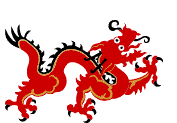During the Vietnam War, the defense of
Air Force bases mirrored the conflict itself: There was no rear echelon once
the entire country became a battlefield. Air Force bases relatively,
unaffected by ground forces in past wars, were no longer considered safe
havens. They, too, suffered from costly ground assaults and mortar shelling.
Qui Nhon was a major seaport and capital of Binh Dinh Province, in the central highlands of South Viet Nam. It was located on the coast, south of Đà Nàng AB. This was the main seaport for all military forces in the Central Highlands. Practically all supplies destined for the Highlands region were off-loaded from ships which docked in the port, which had been enhanced by U.S. contractors to accommodate deep-draft ships. Transport airplanes (C-130 Hercules and C-7 Caribous) were used to transport supplies and personnel. Forward Air Controllers were assigned here, with their own aircraft ground crews. The Army had a large number of support units in Qui Nhon and its suburbs. These included a field hospital and large supply center. Qui Nhon also provided an operating base and logistic center for the Navy’s Coastal Surveillance Force. With easy access to coastal waters and the shipping lanes of the South China Sea, the port was well placed to support the anti-infiltration operation, known as "Market Time." Sentry dogs assigned to the Army's 981st Sentry Dog Company were used in the area but to my knowledge Air Force dogs were never assigned to Qui Nhon.
Above Photo Courtesy of Dan Braswell
At the end of the American cavalry era, the Army disposed of its horses by machine gunning them to death. In our war, the dogs were treated the same way. Only it was done in a more “humane” manner. Some excess dogs were reassigned to other bases in the Pacific but most were killed. The US Military has pledged not to dispose of military working dogs in such a manner again. Please read Death of a Warrior . |


